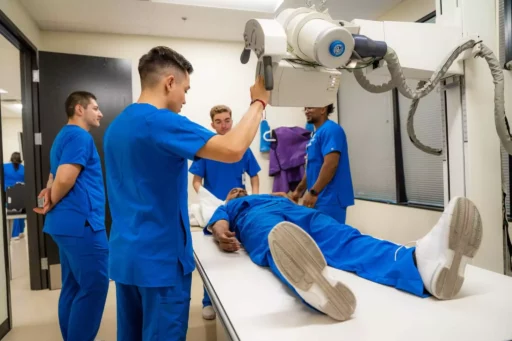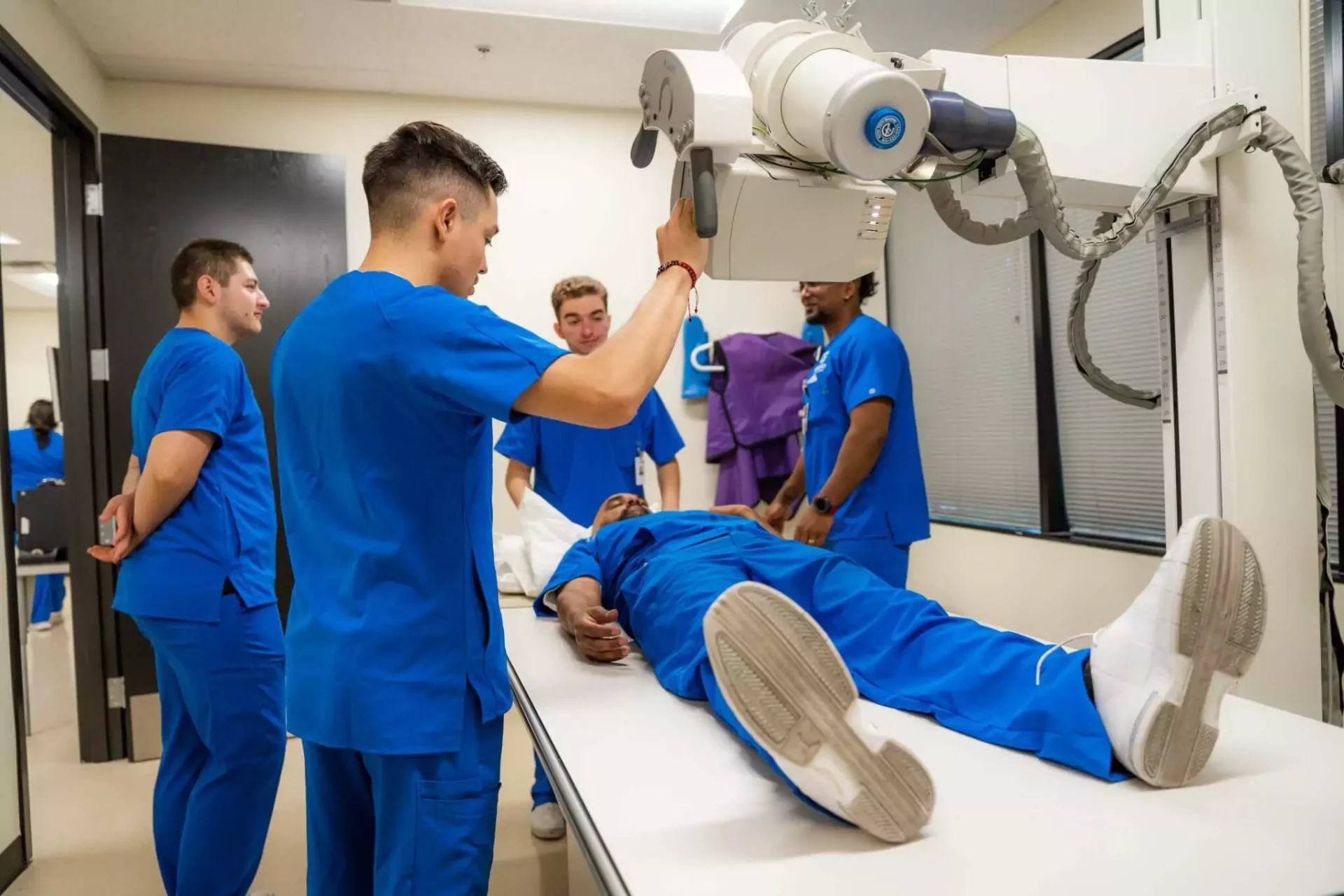In the ever-evolving field of healthcare, radiologic technology plays a critical role, with x-ray technicians being at the forefront of diagnostic imaging. As the demand for skilled healthcare professionals increases, the importance of specialized education becomes paramount. This comprehensive guide explores the ins and outs of x-ray tech schools, providing valuable insights into their programs, career opportunities, and what prospective students should consider when choosing a school.
1. Understanding the Role of an X-Ray Technician
1.1 What is an X-Ray Technician?
An x-ray technician, also known as a radiologic technologist, is a healthcare professional who performs diagnostic imaging examinations using x-ray equipment. Their primary responsibility is to produce high-quality images of the human body to aid physicians in diagnosing and treating medical conditions. X-ray technicians must possess a thorough understanding of anatomy, patient care, and the principles of radiation safety.
1.2 Key Responsibilities
The responsibilities of an x-ray technician extend beyond simply operating imaging equipment. Key duties include:
- Preparing Patients: X-ray techs explain procedures to patients, ensuring they are comfortable and informed about the process.
- Positioning Patients: Proper positioning is crucial for obtaining accurate images; technicians must skillfully position patients to capture the required views.
- Operating Equipment: Technicians must be proficient in using x-ray machines and associated technology.
- Ensuring Safety: They adhere to strict safety protocols to minimize radiation exposure for both patients and themselves.
- Maintaining Records: Accurate record-keeping is essential for patient history and imaging results.
1.3 Importance of X-Ray Technicians in Healthcare
X-ray technicians are vital in the healthcare system, contributing to accurate diagnoses and effective treatment plans. Their work helps in identifying fractures, infections, tumors, and more, making them an indispensable part of medical teams.
2. The Path to Becoming an X-Ray Technician
2.1 Educational Requirements
To become an x-ray technician, individuals typically need to complete an accredited educational program. The following options are available:
- Associate Degree Programs: The most common route, these programs usually take 24 to 36 months to complete and include both classroom instruction and clinical experience.
- Bachelor’s Degree Programs: For those looking to advance their careers, a bachelor’s degree in radiologic technology may be pursued. These programs often include additional coursework in management and advanced imaging techniques.
2.2 Certification and Licensing
Most states require radiologic technologists to be licensed or certified. Certification is generally obtained through the American Registry of Radiologic Technologists (ARRT) after passing a national exam. Many states also have their own licensing requirements, which may include additional examinations.
2.3 Continuing Education
To maintain certification, x-ray technicians must engage in continuing education. This requirement ensures that they stay updated on the latest technologies and best practices in the field.
3. Choosing the Right X-Ray Tech School
3.1 Accreditation Matters
When selecting an x-ray tech school, it’s essential to choose an accredited institution. Accreditation ensures that the program meets high educational standards and adequately prepares students for their careers. The Joint Review Committee on Education in Radiologic Technology (JRCERT) is the primary accrediting body for radiologic technology programs.
3.2 Program Curriculum
Potential students should review program curricula to ensure they align with their career goals. Key topics typically covered in x-ray tech programs include:
- Anatomy and Physiology
- Radiobiology and Radiation Safety
- Patient Care and Ethics
- Imaging Techniques and Procedures
3.3 Clinical Experience Opportunities
Hands-on clinical experience is a critical component of x-ray tech education. Students should look for programs that offer extensive clinical rotations, allowing them to apply their knowledge in real-world settings under the supervision of experienced professionals.
3.4 Financial Considerations
Education costs can vary widely among x-ray tech schools. Prospective students should consider tuition fees, available financial aid, scholarships, and potential student loan debt when making their decision. Additionally, some hospitals offer tuition reimbursement programs for employees who wish to further their education.
3.5 Location and Flexibility
The location of the school and the flexibility of its programs can significantly impact a student’s experience. Considerations include:
- Proximity to workplaces for potential employment after graduation.
- Availability of online or hybrid courses for those balancing work and study commitments.
4. The Application Process
4.1 Preparing Your Application
The application process for x-ray tech schools can be competitive. Here are steps to enhance your application:
- Maintain Strong Academic Performance: High school or college GPA can be a critical factor.
- Obtain Recommendation Letters: Letters from healthcare professionals can strengthen your application.
- Write a Compelling Personal Statement: Articulate your passion for radiologic technology and your career aspirations.
- Prepare for Interviews: Some programs may require interviews; practice articulating your reasons for pursuing this career.
4.2 Application Deadlines
Be aware of application deadlines, which can vary by institution. Early application can sometimes increase your chances of acceptance.
5. Career Outlook for X-Ray Technicians
5.1 Job Market Demand
The Bureau of Labor Statistics (BLS) projects a growth rate of 7% for radiologic technologists and technicians from 2021 to 2031, which is faster than the average for all occupations. This growth is fueled by an aging population and a greater emphasis on diagnostic imaging.
5.2 Potential Work Environments
X-ray technicians can find employment in a variety of settings, including:
- Hospitals
- Outpatient clinics
- Imaging centers
- Physicians’ offices
- Research facilities
5.3 Salary Expectations
According to the BLS, the median annual wage for radiologic technologists was approximately $61,900 as of May 2022. Salaries can vary based on experience, education level, and geographic location.
5.4 Career Advancement Opportunities
X-ray technicians have numerous avenues for career advancement, including:
- Specializing in advanced imaging modalities, such as MRI or CT scans.
- Pursuing management or supervisory roles within medical facilities.
- Teaching positions in radiologic technology programs.
- Engaging in research or clinical trials related to imaging technologies.
6. Conclusion
Choosing the right x-ray tech school is a significant step toward a rewarding career in healthcare. By understanding the role, educational requirements, and career outlook for x-ray technicians, prospective students can make informed decisions that align with their goals. As the healthcare landscape continues to evolve, skilled radiologic technologists will remain essential contributors to patient care and diagnostic excellence. Whether you are just starting your journey or looking to advance in the field, the opportunities in radiologic technology are vast and promising.
Additional Resources
- American Society of Radiologic Technologists (ASRT): Provides professional development, advocacy, and educational resources for radiologic technologists.
- Radiological Society of North America (RSNA): Offers information on radiology and imaging technology through education and research initiatives.
By following this guide, aspiring x-ray technicians can navigate their educational journey and embark on a fulfilling career path in the healthcare industry.





